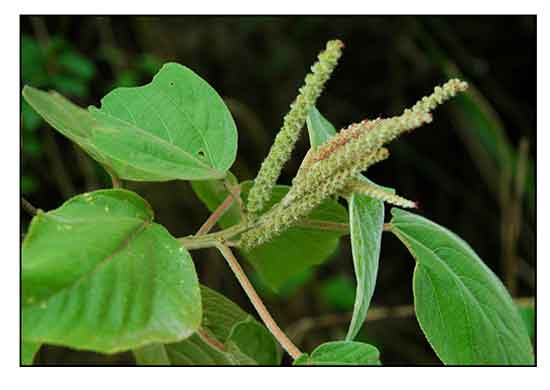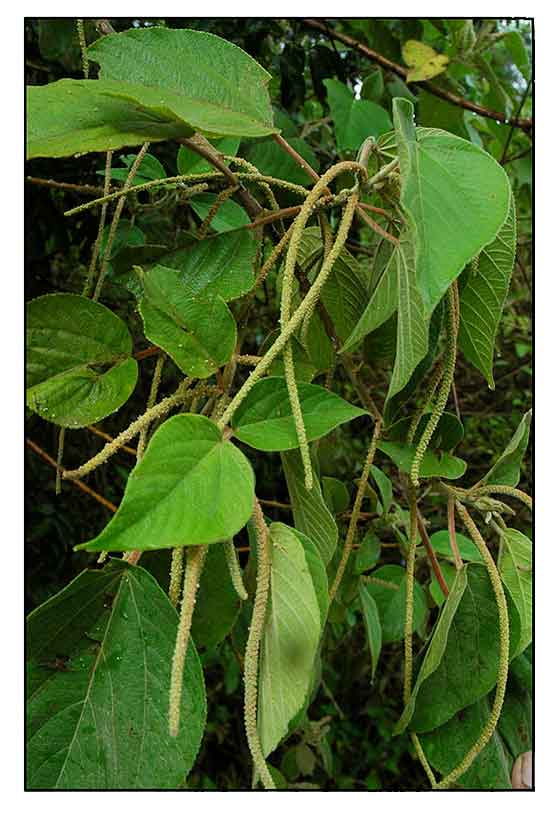
Family • Euphorbiaceae
Malasapsap
Acalypha caturus Blume
MIGTANONG
Jian wei tie xian cai
| Scientific names | Common names |
| Acalypha caturus Blume | Ambugtunong (Bisaya) |
| Acalypha caturus f. angustifolia J.J.Sm. | Malasapsap (Tagalog) |
| Acalypha cinnamomifolia Pax & K.Hoffm. | Migtanong (Bikol) |
| Acalypha cinnamomifolia var. induta Airy Shaw | |
| Acalypha minahassae Koord. | |
| Acalypha similis Koord. | |
| Ricinocarpus caturus (Blume) Kuntze | |
| Acalypha caturus Blume is an accepted species. KEW: Plants of the World Online | |
| Other vernacular names |
| CHINA: Jian wei tie xian cai. |
| INDONESIA: Bunga halaman, Hanjawan, Goprak, Kalangkongan, Kayu in cios, Ki lauk. |
| MALAYSIA: Sepang. |
Botany  Distribution Distribution- Native to the Philippines. - Also native to Bismarck Archipelago, Borneo, Jawa, Lesser Sunda Is., Malaya, Maluku, New Guinea, Sulawesi, Sumatera, Vanuatu. (2) - In open places in forests or in secondary forests or open land, below 100-200 m. Often along rivers or on dry riverbeds or along roads. also on limestone. (2) Constituents Properties Studies Availability |
October 2023
![]()
 |
| PHOTOS / ILLUSTRATIONS |
| IMAGE SOURCE: Euphorbiaceae : Acalypha caturus / Flowering twig / Copyright © 2011 by Leonardo L Co [ref. DOL32623] / Non-Commercial Use / click on image or link to go to source pagre / Phytoimages.siu.edu |
| OTHER IMAGE SOURCE: Euphorbiaceae : Acalypha caturus / Flowering plant / Copyright © 2011 by Leonardo L Co [ref. DOL32622] / Non-Commercial Use / click on image or link to go to source pagre / Phytoimages.siu.edu |
Additional
Sources and Suggested Readings |
• |
DOI: It is not uncommon for links on studies/sources to change. Copying and pasting the information on the search window or using the DOI (if available) will often redirect to the new link page. (Citing and Using a (DOI) Digital Object Identifier) |
| List of Understudied Philippine Medicinal Plants |
| New plant names needed The compilation now numbers over 1,300 medicinal plants. While I believe there are hundreds more that can be added to the collection, they are becoming increasingly difficult to find. If you have a plant to suggest for inclusion, please email the info: local plant name (if known), any known folkloric medicinal use, scientific name (most helpful), and, if available, a photo. Suggestions are greatly appreciated. (G.Stuart) |
• |
 |


